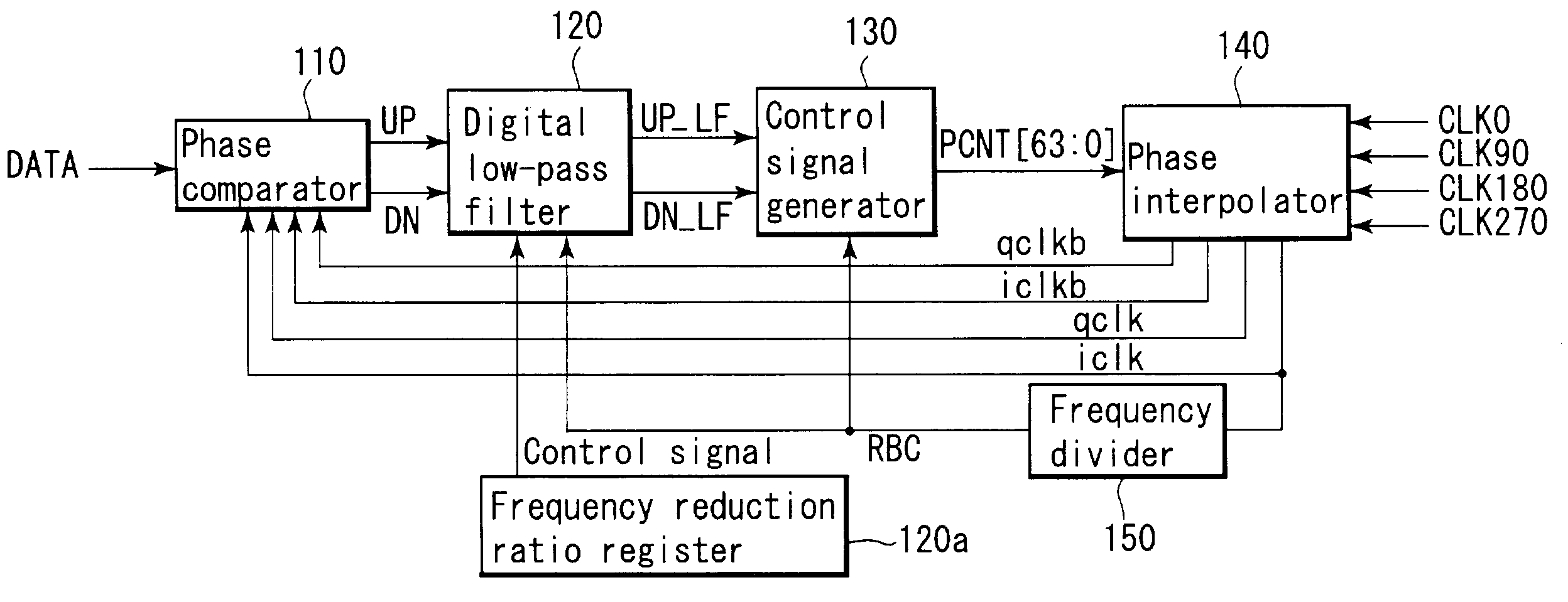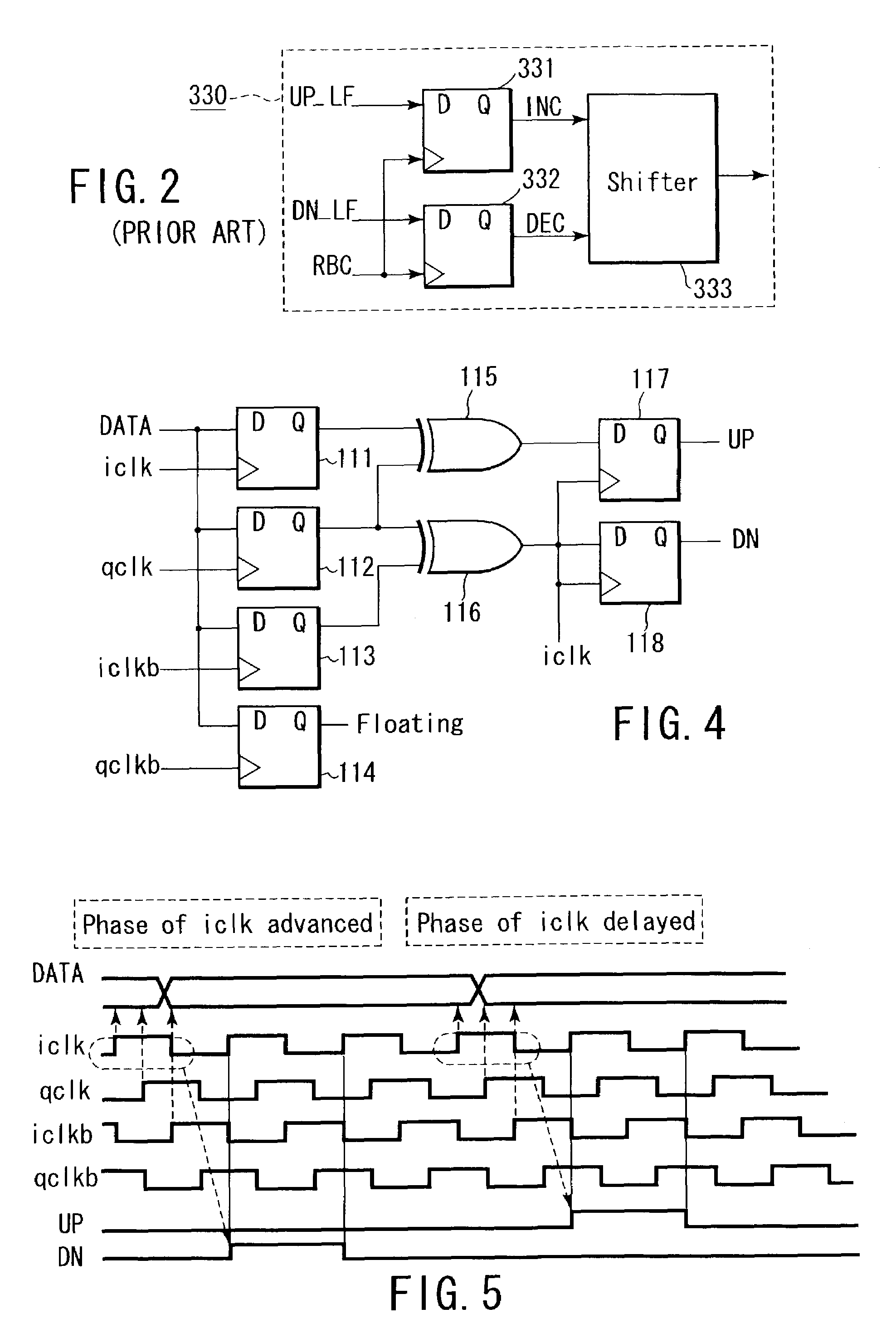Clock recovery circuit
- Summary
- Abstract
- Description
- Claims
- Application Information
AI Technical Summary
Benefits of technology
Problems solved by technology
Method used
Image
Examples
Embodiment Construction
[0027]Before explaining an embodiment, problems in the conventional clock recovery circuit will be first described. FIG. 1 shows an example of a conventional clock recovery circuit using multiphase clocks. In FIG. 1, reference numeral 310 denotes a phase comparator which is of a binary type; 320, a digital low-pass filter; 330, a control signal generator; 340, a phase interpolator; and 350, a frequency divider.
[0028]The binary type phase comparator 310 reads reception data by using four-phase sampling clocks iclk, qclk, iclkb, qclkb which are generated by the phase interpolator 340 and whose phases are shifted 90°, respectively, judges the phases of the sampling clocks relative to the reception data based on two values, i.e., an advanced value and a delayed value, and outputs judgment results in the form of a signal UP and a signal DN.
[0029]In this case, since comparing values of the reception data read by using the sampling clocks iclk, qclk, iclkb and qclkb can find sampling clock...
PUM
 Login to View More
Login to View More Abstract
Description
Claims
Application Information
 Login to View More
Login to View More - R&D
- Intellectual Property
- Life Sciences
- Materials
- Tech Scout
- Unparalleled Data Quality
- Higher Quality Content
- 60% Fewer Hallucinations
Browse by: Latest US Patents, China's latest patents, Technical Efficacy Thesaurus, Application Domain, Technology Topic, Popular Technical Reports.
© 2025 PatSnap. All rights reserved.Legal|Privacy policy|Modern Slavery Act Transparency Statement|Sitemap|About US| Contact US: help@patsnap.com



